CBPV & Ants
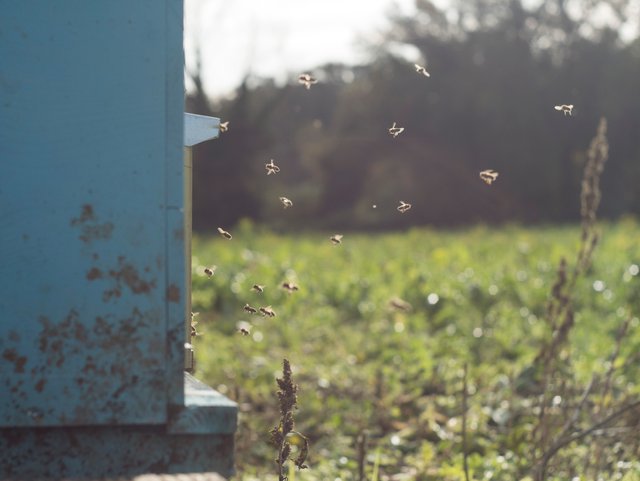
Let’s go back to talking about bees and ants, and how the CBPV virus is closely related to them.
The virus of chronic paralysis affects the nervous centres of bees, disorientates them and does not allow to continue the normal development in the life of the hive to the affected individual in the community. Maybe one of the most common bee diseases, is considered in fact that in every apiary, one family is already in contact with this virus.
As for other cases already seen previously, varroa is an excellent carrier inside the hive and not only, in fact, thanks to the help of ants, varroa is able to propagate its ray of virulence even to the outside of the single hive to continue in the rest of the apiary.
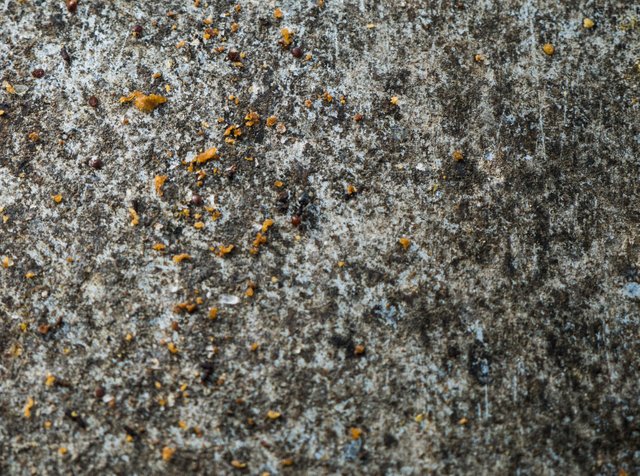
But how do ants actively contribute to the spread of the virus?
The hive is an endless source of food and useful products to be reused, ants do not miss this opportunity. It is common to find them in the area above the hive or inside the drawer below the hive, intent on cleaning up any rest left by the family of bees. And it’s right now that the little ant turns into the number one vector of the CBPV virus.
Among the remains of the hive are in fact present the excrements of both bees and varroes this allow to create an excellent substratum for the proliferation of viruses and bacteria. In addition, as in the case of varroa itself, also for ants the CBPV does not appear to be harmful to their body.
But how was it possible to understand this close correlation between the ants and the CBPV?
From searches carried out by the team of researchers and published in “detection of chronic bee paralysis virus […] in various hosts and possible ways of spread”, it emerges that the presence of negative-sense RNA is higher in the hives where the ants were present. Three beehives with the same characteristics and located in different "controlled areas" were taken into consideration, in each hive there were bees with similar symptoms; like tremor, K-shaped wings (when we can see all 4 of the bee's wings), loss of hair and tending to black, called also "Black Mal".
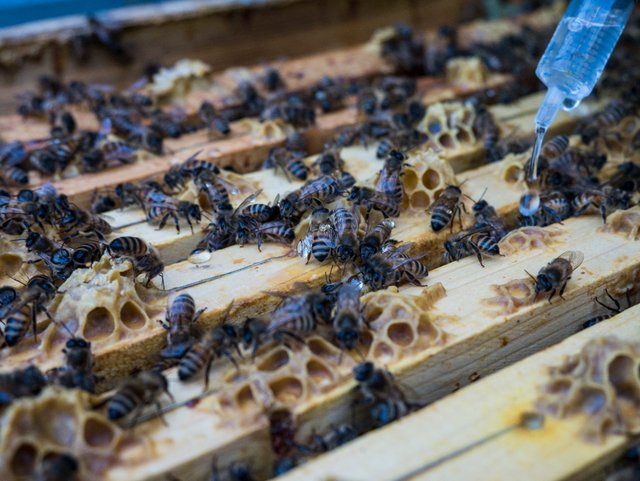
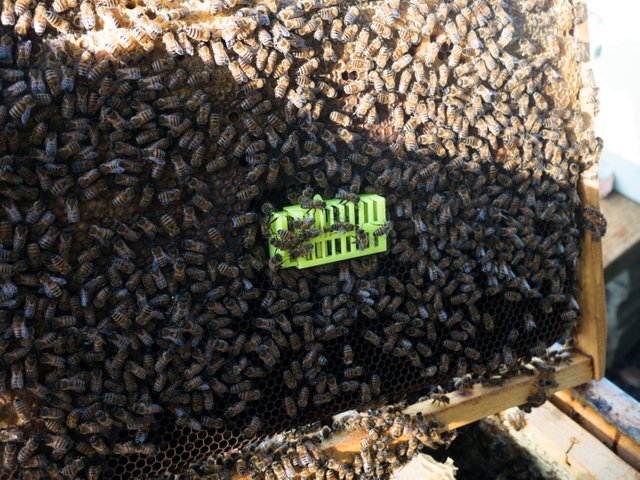
A very important aspect of the spread of the CBPV virus is highlighted, by the same team of researchers, through feces.
In this case the samples were taken from strains experimentally inoculated using viruses obtained from infected bees and replicated through the use of the polymerase chain reaction.
Samples of bees have been inserted inside test tubes with faeces containing CBPV, and the results were positive in all cases, the virus even through contact with the faeces has managed to infect the bees.
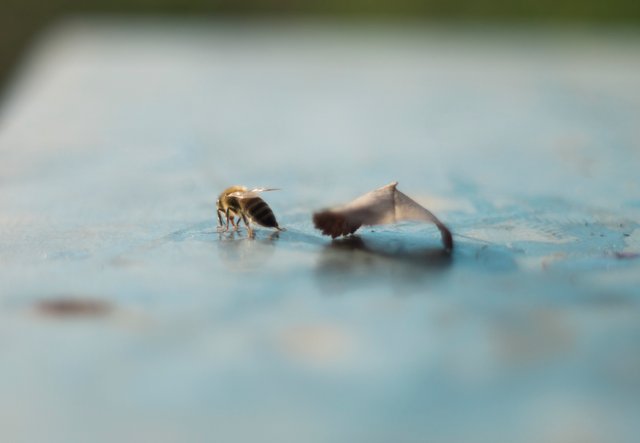
And it is precisely here that our small ants come into action, once ascertained by the RT-PCR technique of the presence of the virus, it is clear how ants, staking into the bottoms of the hives and coming into contact with the virus through the faeces, succeed in transporting it not only inside the hive itself increasing the virulence of the virus, but also spreading it from hive to hive, increasing the number of cases of infection with Chronic Paralysis.
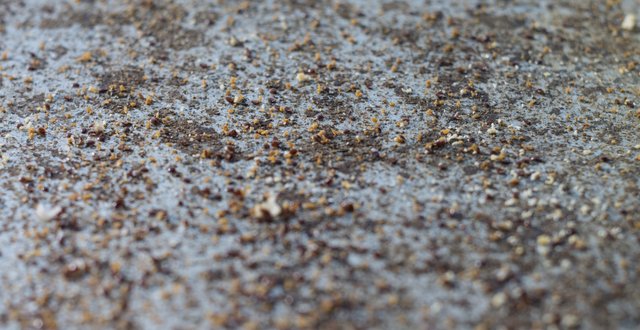
BUT why is this disease so dangerous for our bees?
The symptoms of the disease appear visually only during the adult phase of the bee, while the infection occurs during the larval state where the varroa intent on reproducing and parasitizing the young pupae, will also transmit them the CBPV virus.
The latent and progressive development of the virus allows the normal growth of the larva until flicker is reached, which is why it remains very difficult for beekeepers to find the presence of the disease in the family in time.
Another thing, we can call it aggravating, which makes it even more difficult to detect this pathology, is the moment in which it occurs, in fact, as previously said, the evident signs on the body of the bee are evident only in adulthood, this combined with the fact that the virus is predominantly transmitted by the varroa mite during the parasitosis, sees its peak during the winter period, a period in which beekeepers slow down visits to beehives.
For this reason, it is very important to carry out treatments against varroa and to make sure that they have been effective, the continuation of invasive pathologies inside the hive compromises the homeostasis of the hive organism, which will go against other pathologies besides the current one.
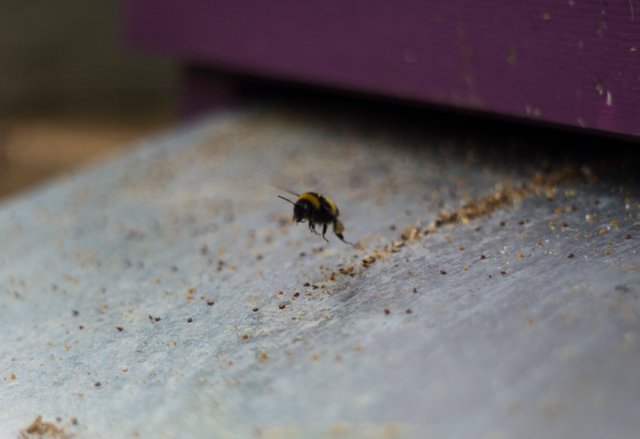
Detection of Chronic bee paralysis virus (CBPV) genome and its replicative RNA form in various hosts and possible ways of spread
Spread of Infectious Chronic Bee Paralysis Virus by Honeybee (Apis mellifera L.) Feces
CHRONIC BEE PARALYSIS VIRUS (CBPV)
Detection of Chronic bee paralysis virus (CBPV) genome and its replicative RNA form in various hosts and possible ways of spread
Il mondo dell Api : Il caso delle api nude
All photos are my property
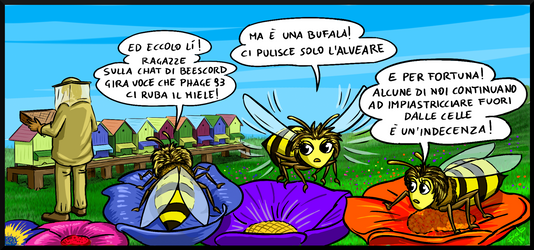
Immagine di mia proprietà, realizzata da @pab.ink un ringraziamento speciale al team di @DaVinci.art
Hello,
Your post has been manually curated by a @stem.curate curator.
We are dedicated to supporting great content, like yours on the STEMGeeks tribe.
Please join us on discord.
porta al decesso dell'ape e allo stare male durante la vita e laboriose come sono forse non riuscirebbero a fare bene neanche il miele!
Hi, @phage93!
You just got a 13.2% upvote from SteemPlus!
To get higher upvotes, earn more SteemPlus Points (SPP). On your Steemit wallet, check your SPP balance and click on "How to earn SPP?" to find out all the ways to earn.
If you're not using SteemPlus yet, please check our last posts in here to see the many ways in which SteemPlus can improve your Steem experience on Steemit and Busy.